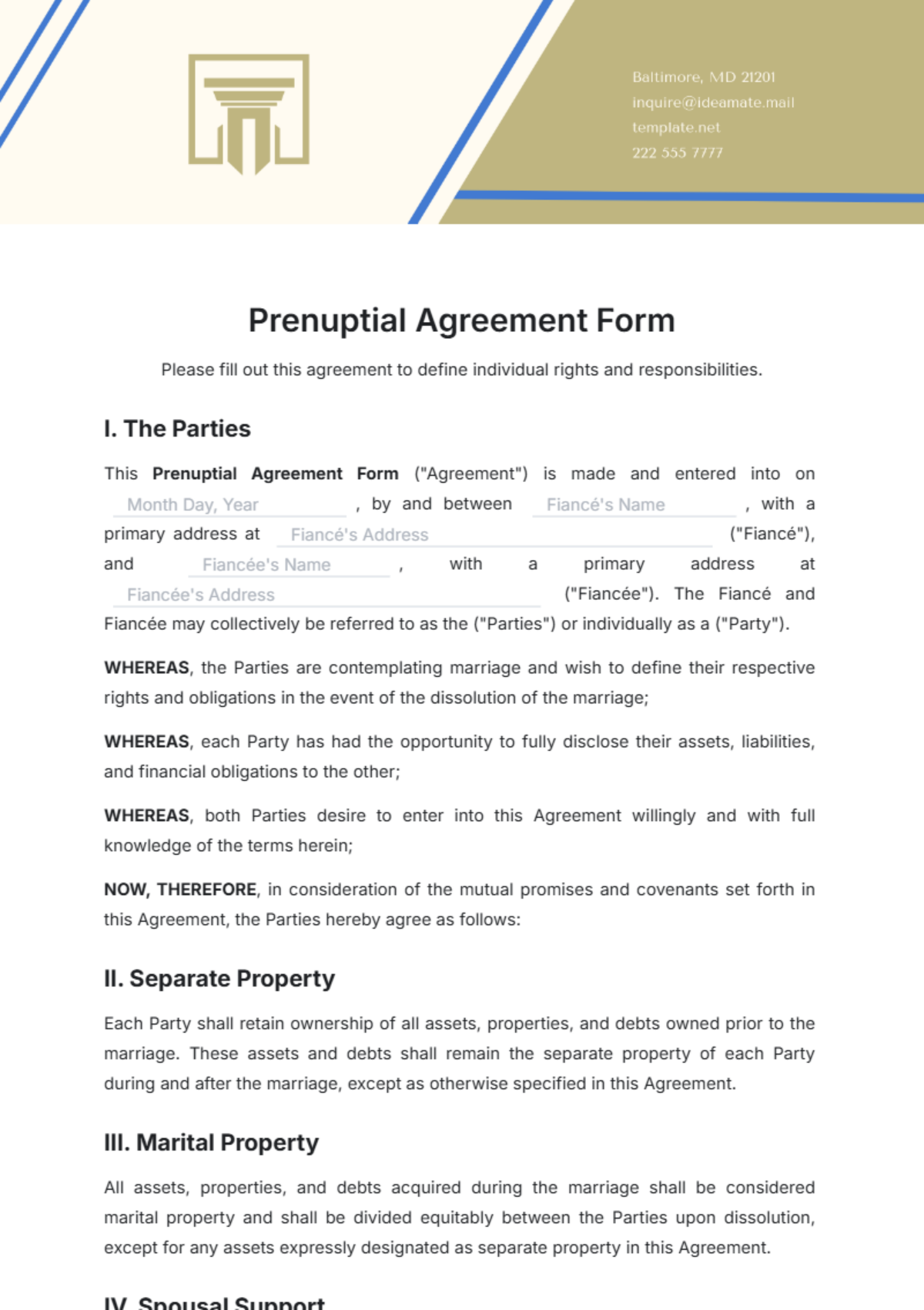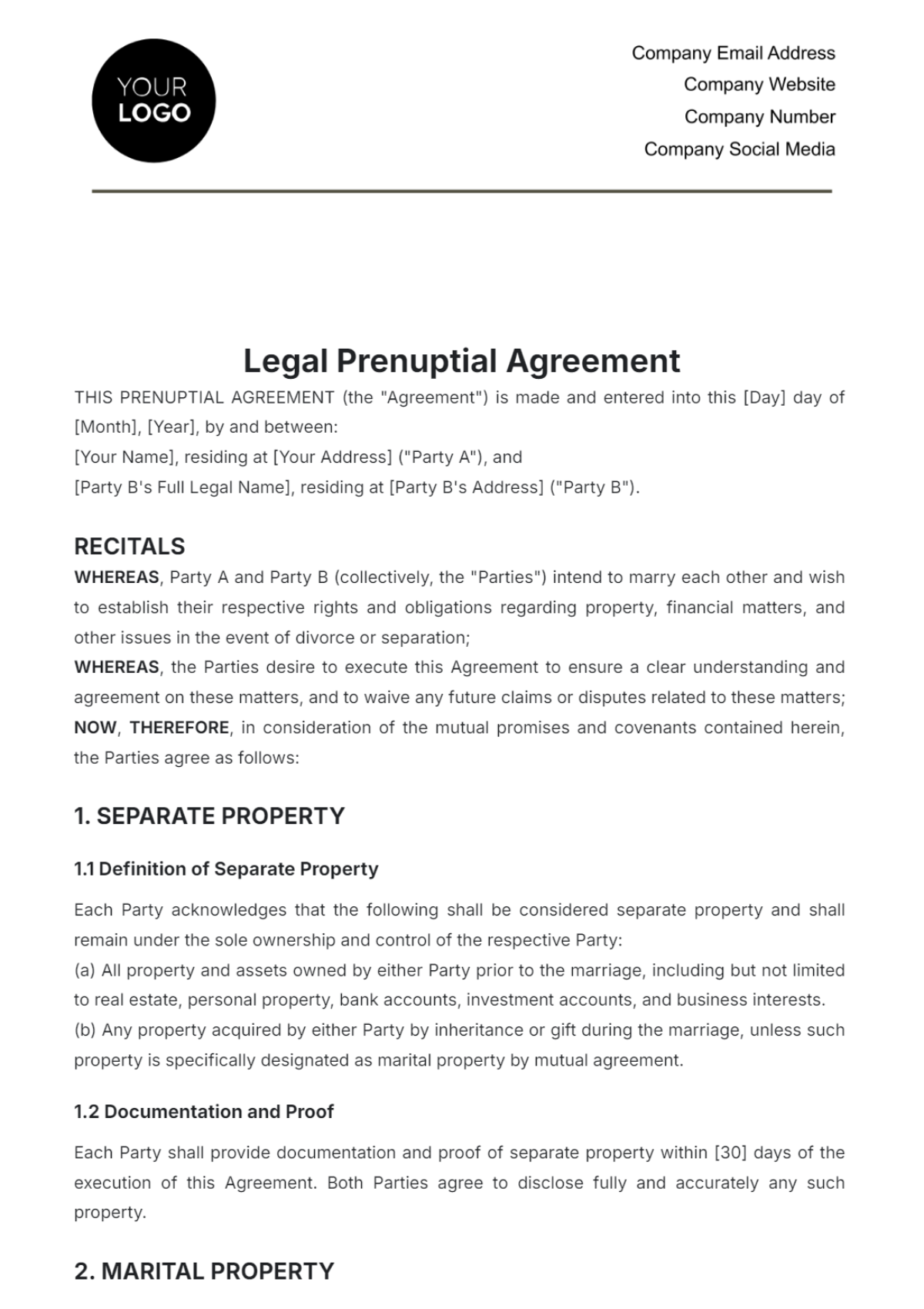Bring Your Legal Peace of Mind to Life with Prenuptial Agreement Templates from Template.net
Keep your financial future secure, protect your assets, and ensure fair agreements with Prenuptial Agreement Templates from Template.net. These customizable templates are perfect for couples planning their future together, allowing them to easily create professional and comprehensive prenuptial agreements without the need for a legal degree. Whether you're looking to clarify property ownership or establish financial responsibilities, these templates have you covered. Included with each template is a step-by-step guide that breaks down complex legalese into understandable language. With no prior legal knowledge required, plus the benefit of professional-grade design, preparing your agreement has never been easier or more cost-effective.
Discover the many Prenuptial Agreement Templates we have on hand to suit your needs. Simply choose a template that fits your situation, swap in your personal details, and tweak the colors and fonts to your liking. Add advanced touches like dragging-and-dropping icons or graphics, and incorporate AI-powered text tools for additional clarity. The possibilities are endless and require no specialized skills, making it exciting to tailor your agreement exactly as you envision. Our library is regularly updated with new designs, ensuring you always have access to the latest styles. When you're finished, download or share your agreement via print or email, making it ideal for multiple scenarios including consultation with attorneys or personal records.





